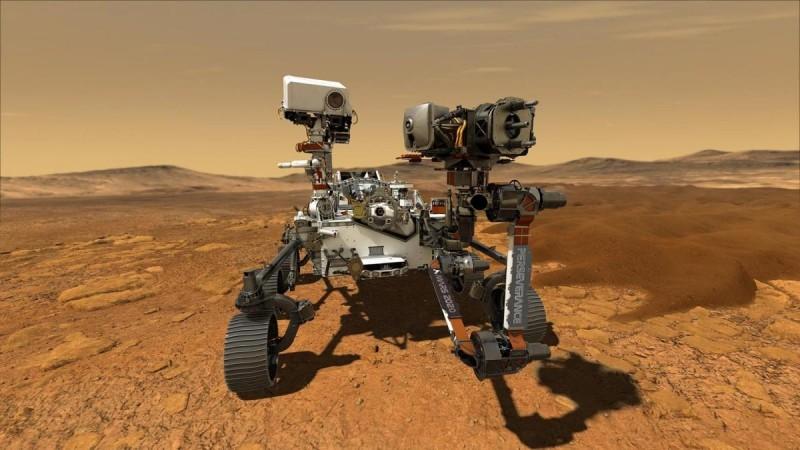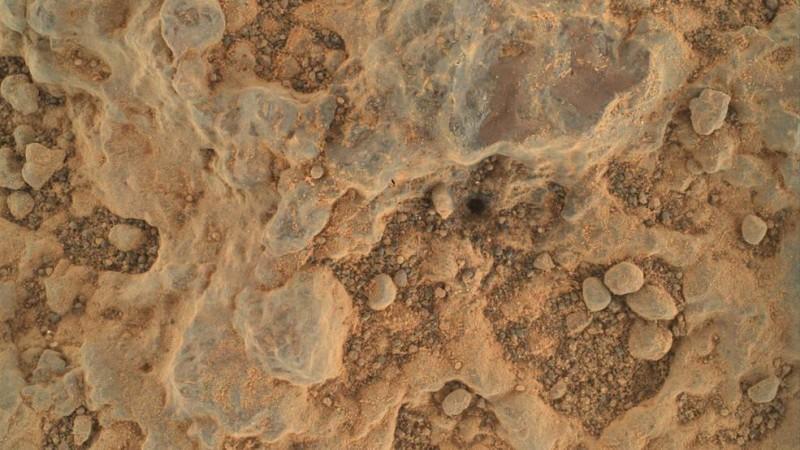After testing all its instruments on its mechanical arm, the Perseverance rover has begun the mission that it was put on Mars for—examining Martian dust and rocks for evidence of former life. Using its well-equipped robotic arm, the rover recorded its very first scientific readings of the dust that give the planet its reddish appearance, NASA announced on Tuesday.
The array of instruments on the 7-foot (2-meter) mechanical arm, which comprises sensors, x-ray and photographic equipment, and more, were tested by the exploratory vehicle. In particular, its x-ray component—Planetary Instrument for X-ray Lithochemistry (PIXL)—provided extraordinary results while only testing was underway.
"We got our best-ever composition analysis of Martian dust before it even looked at rock," said Abigail Allwood, principal investigator of PIXL at NASA's Jet Propulsion Laboratory (JPL), in a statement. JPL, which built Perseverance, manages the rover's operations.
Looking Deep Inside Rocks

The size of a lunch box, PIXL is located at the end of the mechanical arm. In its first run, the instrument focused its X-rays on a small target for calibration located on the rover itself. It was able to discern the composition of the dust that had deposited itself on the calibration target.
In addition to analysis of rocks using ultraviolet light and X-rays, Perseverance will also zoom in on minuscule sections of rock surfaces in order to acquire close-ups. This may enable it in securing evidence of any past microbial activity; if there was any. Along with other instruments on the arm, PIXL is set to uncover more about the planet's makeup as it explores several geological features over time.
According to scientists, billions of years ago, the Jezero Crater—where the rover landed—was a crater lake. The Perseverance will begin is data gathering at the now dry and cracked floor of the pre-historic lake. "If life was there in Jezero Crater, the evidence of that life could be there," expressed Allwood.
Trifecta of Life Seekers

PIXL works in combination with other attachments on the arm to provide a comprehensive profile of rock composition, textures, and contours. While PIXL surveys chemicals, two other instruments—SHERLOC and WATSON—map minerals. Short for 'Scanning Habitable Environments with Raman & Luminescence for Organics & Chemicals', SHERLOC utilizes a laser to identify minerals present in the rock. WATSON, or 'Wide Angle Topographic Sensor for Operations and eNgineering', captures close-up images to ascertain grain roundness, texture, and size.
Images captured by WATSON have already provided valuable data about Martian rocks according to researchers. This includes grain sizes in sediments, the range of colors, and also the existence of 'cement' between grains. This can provide vital information about the rock's formation history, the flow of water, and probably ancient habitable environments. Thus, the combination of data from the three tools can help come up with a glimpse of Jezero Crater's environment and history.
"What is the crater floor made out of? What were the conditions like on the crater floor?" questioned, Luther Beegle, principal investigator of SHERLOC. "That does tell us a lot about the early days of Mars, and potentially how Mars formed. If we have an idea of what the history of Mars is like, we'll be able to understand the potential for finding evidence of life," he added.
Unlocking Mars' Mystery

There is no doubt that Perseverance boasts of several autonomous skills such as navigating itself across the Red Planet's terrain. However, the six-wheeled rover still requires the assistance of scientists on Earth for the analysis of results and designing future explorations.
"There are almost 500 people on the science team. The number of participants in any given action by the rover is on the order of 100. It's great to see these scientists come to agreement in analyzing the clues, prioritizing each step, and putting together the pieces of the Jezero science puzzle," explained Beegle.
Being the first mission to collect and cache Martian rock samples, Perseverance will help in their return to Earth. The collected samples will be stored and sealed in sterile metallic tubes on the surface of Mars, with a future mission obtaining and bringing them back home for in-depth analysis. "Mars 2020, in my view, is the best opportunity we will have in our lifetime to address that question," averred Kenneth Williford, the deputy project scientist of Perseverance.









